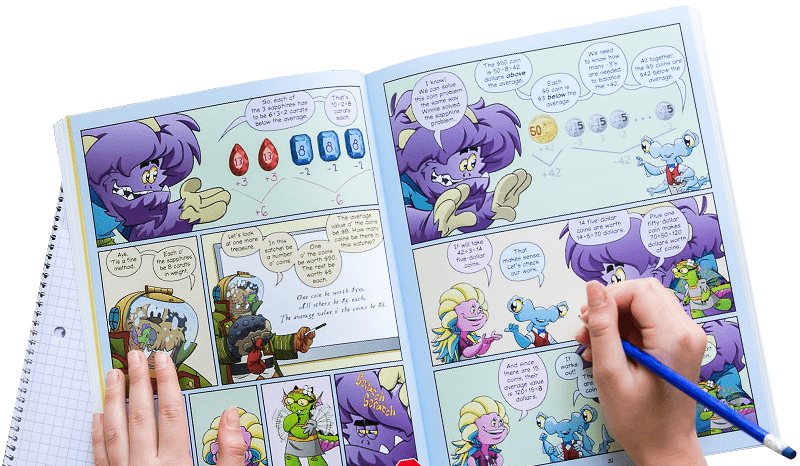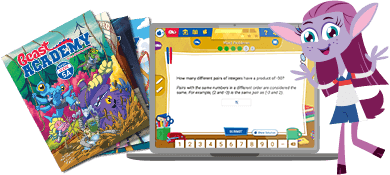Möbius Madness
Cut, twist, and tape a strip of paper to create this famous and surprising mathematical artifact.
Instructions
Have you ever played with a one-sided piece of paper? What's that you say? Impossible?! Get ready to be confounded and surprised by your very own Möbius Strip.
First, cut a strip of paper.

Now take your strip of paper and form a loop, then give one end of the strip of paper a half twist. In other words, hold each end of the strip in a separate hand. Then turn over one end so that what was the bottom side is now the top side. It should look like this:
Now, connect the ends with a piece of tape. As you do, be sure and preserve the half-twist you made.

There it is, your own Möbius Strip! Not so amazing at first. To appreciate it, you've got to play with it a bit. First, draw a line down the middle of one side of the piece of paper. As you do, you'll eventually notice that you are, in fact, drawing your line on the reverse of the side you started on, and then at some point you'll meet back up with the starting point of your line!

This is why a Möbius Strip is, mathematically, a "one-sided" shape. One way to approach this realization with your kids is to first ask them to pick two colors, one for each side. As they start coloring the Möbius Strip, they'll discover that they will actually only use one color to cover the entire strip.
You can do something similar with the edge of your Möbius Strip. Use a marker to color one edge of your strip. Again, you'll find yourself coloring what you had thought was the "other" edge and eventually reaching the point where you began. So, a Möbius Strip is a shape with one side and one edge!
Now try cutting up your Möbius Strip. First, try splitting the strip in two by cutting it in half down the middle, almost as if it were a road and you were cutting it down the center divider between the lanes.

When you reach the point where you began, try to pull your strips apart. You'll find that they are, in fact, still just a single strip!

Is this a new, longer but skinnier Möbius Strip? To find out, try drawing a line down one side of it (or coloring one side). Remarkably, this new strip is not a Möbius Strip! It has two distinct sides (and two edges too, if you'd like to check).
Make yourself another Möbius Strip to try this next cut. Draw small marks to split the width of your strip into thirds. Then cut lengthwise along one of these marks.


You end up with two interlocking strips!
Are these both one-sided Möbius Strips? Or is just one of them? Or neither?
This is a great activity to work alongside your child (or with them if they need help cutting the paper). As you play, ask questions. It's okay if you don't know the answers yourself! The simple act of sharing your own sense of curiosity and wonder helps your child learn to be curious as well. See Variations below for other questions to ask and other things to try when playing with a Möbius Strip.
Don't forget: it's Beast Academy Playground, not Beast Academy Study Hall. Change the rules, be silly, make mistakes, and try again. The Variations and Learning Notes are here for you if you want to dive deeper, but not all of them apply to learners of every age. The most important thing is to have fun.
What do you think of this activity?
We're always looking to improve. Submit your feedback to us below.
- paper
- scissors
- tape
- pencil
- wonder
- MP7

Ready to level up?
Keep problem solving with Beast Academy’s full math curriculum for students ages 6–13. Check out our captivating comic book series and immersive online platform.
LEARN MOREBring problem-solving to your classroom
Keep your entire class engaged with a full book and online math curriculum, for students ages 6–13. 98% of teachers say they’re satisfied with Beast Academy.
LEARN MORE



Ready to level up?
Keep problem solving with Beast Academy’s full math curriculum for students ages 6–13. Check out our captivating comic book series and immersive online platform.
LEARN MOREBring problem-solving to your classroom
Keep your entire class engaged with a full book and online math curriculum, for students ages 6–13. 98% of teachers say they’re satisfied with Beast Academy.
LEARN MORE
Sign up to be notified when new videos are released.















































